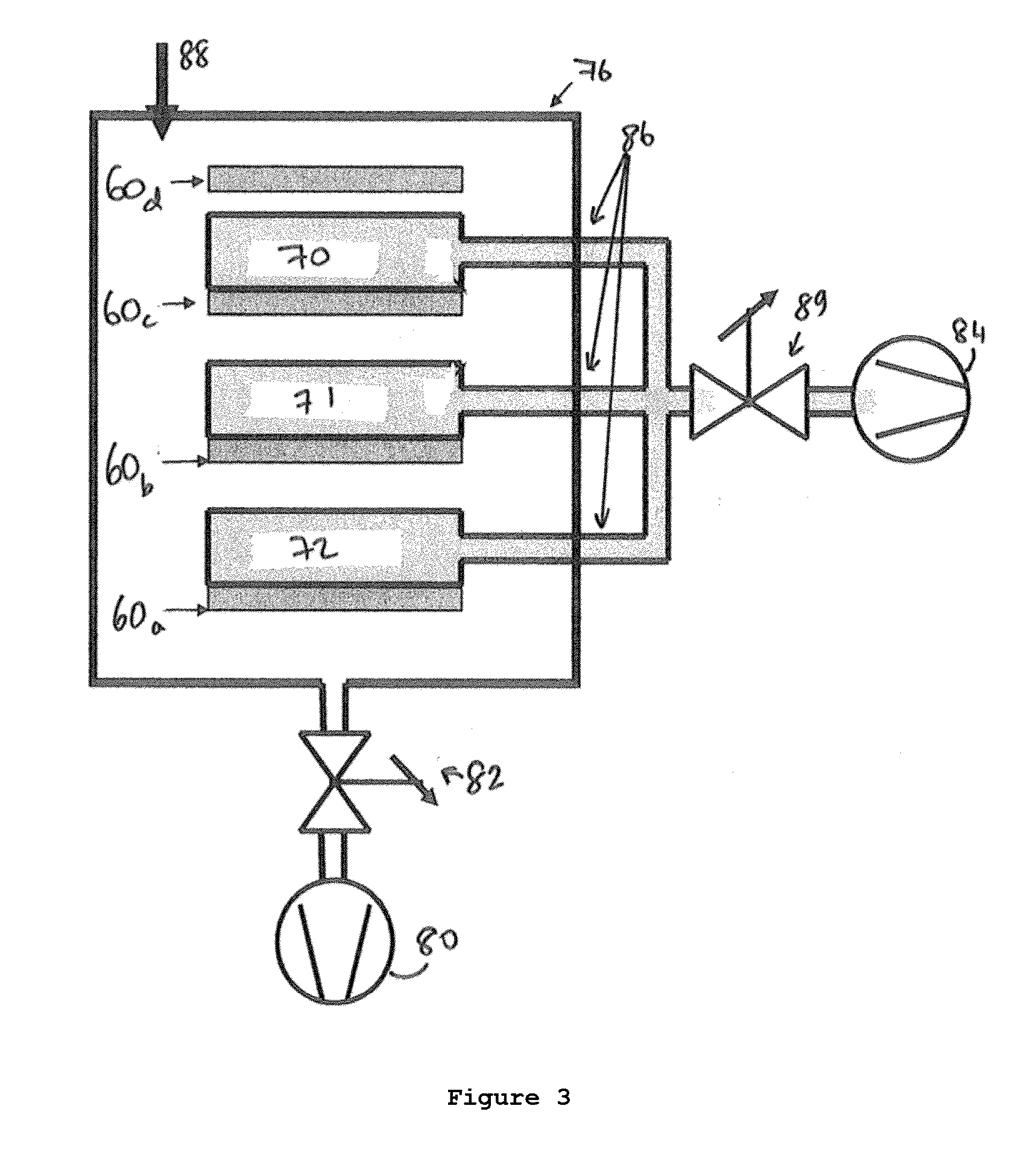Heat transfer control in pecvd systems
- Summary
- Abstract
- Description
- Claims
- Application Information
AI Technical Summary
Benefits of technology
Problems solved by technology
Method used
Image
Examples
Embodiment Construction
[0032]According to the invention, the deposition process shall be modified as follows: During a deposition cycle H2 gas is fed via inlet 88 into chamber 76 to increase the pressure in volume 75. The pressure can be controlled by the H2 gas inflow and / or a control valve 82 in the pump line. Up to about 10 mbar pressure the heat conductance increases with increasing gas pressure, so for high RF power applied in reactors 70-72 such a high pressure regime is preferred. It is further proposed to arrange cooling plates 60 very close to the reactor, preferable having a distance in the range of less than 3 mm, preferably less than 1 mm. This close arrangement allows better heat transfer from the reactors 70-72 to cooling plates 60. By not fixedly mounting cooling plates 60 to reactors 70-72 it is still possible to quickly remove the reactors from a stack as shown in FIG. 2. Typically, the distance between the reactor bottom and the adjacent cooling plate is 15-20 mm.
[0033]As has been outlin...
PUM
| Property | Measurement | Unit |
|---|---|---|
| Temperature | aaaaa | aaaaa |
| Temperature | aaaaa | aaaaa |
| Pressure | aaaaa | aaaaa |
Abstract
Description
Claims
Application Information
 Login to View More
Login to View More - R&D
- Intellectual Property
- Life Sciences
- Materials
- Tech Scout
- Unparalleled Data Quality
- Higher Quality Content
- 60% Fewer Hallucinations
Browse by: Latest US Patents, China's latest patents, Technical Efficacy Thesaurus, Application Domain, Technology Topic, Popular Technical Reports.
© 2025 PatSnap. All rights reserved.Legal|Privacy policy|Modern Slavery Act Transparency Statement|Sitemap|About US| Contact US: help@patsnap.com


